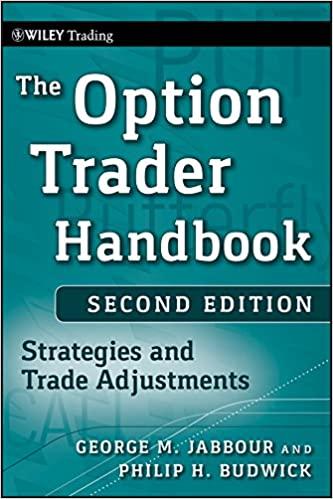Question
1. A-Rod Manufacturing Company is trying to calculate its cost of capital for use in making a capital budgeting decision. Mr. Jeter, the vice-president of
1.
A-Rod Manufacturing Company is trying to calculate its cost of capital for use in making a capital budgeting decision. Mr. Jeter, the vice-president of finance, has given you the following information and has asked you to compute the weighted average cost of capital.
The company currently has outstanding a bond with a 10.4 percent coupon rate and another bond with an 8.0 percent rate. The firm has been informed by its investment banker that bonds of equal risk and credit rating are now selling to yield 11.3 percent. The common stock has a price of $58 and an expected dividend (D1) of $1.78 per share. The historical growth pattern (g) for dividends is as follows:
| $ | 1.33 |
| 1.47 | |
| 1.62 | |
| 1.78 |
The preferred stock is selling at $78 per share and pays a dividend of $7.40 per share. The corporate tax rate is 30 percent. The flotation cost is 2.5 percent of the selling price for preferred stock. The optimal capital structure for the firm is 30 percent debt, 10 percent preferred stock, and 60 percent common equity in the form of retained earnings.
a. Compute the historical growth rate. (Do not round intermediate calculations. Round your answer to the nearest whole percent and use this value as g. Input your answer as a whole percent.)
Growth rate =
b. Compute the cost of capital for the individual components in the capital structure. (Use the rounded whole percent computed in part a for g. Do not round any other intermediate calculations. Input your answers as a percent rounded to 2 decimal places.)
| |||||||||||||
c. Calculate the weighted cost of each source of capital and the weighted average cost of capital. (Do not round intermediate calculations. Input your answers as a percent rounded to 2 decimal places.)
2. Northwest Utility Company faces increasing needs for capital. Fortunately, it has an Aa3 credit rating. The corporate tax rate is 40 percent. Northwests treasurer is trying to determine the corporations current weighted average cost of capital in order to assess the profitability of capital budgeting projects. Historically, the corporations earnings and dividends per share have increased about 7.2 percent annually and this should continue in the future. Northwests common stock is selling at $62 per share, and the company will pay a $2.50 per share dividend (D1). The companys $92 preferred stock has been yielding 5 percent in the current market. Flotation costs for the company have been estimated by its investment banker to be $4.00 for preferred stock. The companys optimal capital structure is 30 percent debt, 20 percent preferred stock, and 50 percent common equity in the form of retained earnings. Refer to the following table on bond issues for comparative yields on bonds of equal risk to Northwest.
a. Compute the cost of debt, Kd (use the accompanying tablerelate to the utility bond credit rating for yield.) (Do not round intermediate calculations. Input your answer as a percent rounded to 2 decimal places.) Cost of debt = % b. Compute the cost of preferred stock, Kp. (Do not round intermediate calculations. Input your answer as a percent rounded to 2 decimal places.) Cost of preferred stock = % c. Compute the cost of common equity in the form of retained earnings, Ke. (Do not round intermediate calculations. Input your answer as a percent rounded to 2 decimal places.) Cost of common equity = % d. Calculate the weighted cost of each source of capital and the weighted average cost of capital. (Do not round intermediate calculations. Input your answers as a percent rounded to 2 decimal places.)
| |||||||||||||||||||||||||||||||||||||||||||||||||||||||||||||||||||||||||||||||||||||||||||||||||||||||||||||||||||||||||||||||||||||
Step by Step Solution
There are 3 Steps involved in it
Step: 1

Get Instant Access to Expert-Tailored Solutions
See step-by-step solutions with expert insights and AI powered tools for academic success
Step: 2

Step: 3

Ace Your Homework with AI
Get the answers you need in no time with our AI-driven, step-by-step assistance
Get Started


